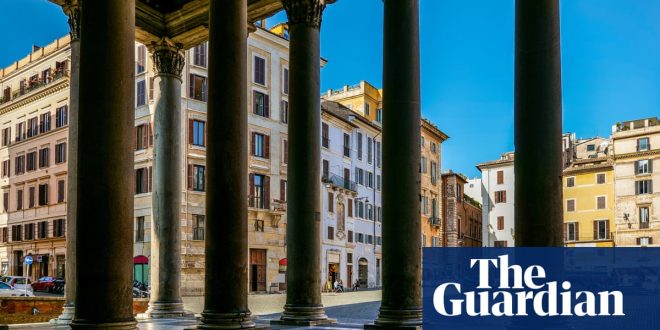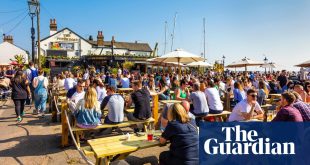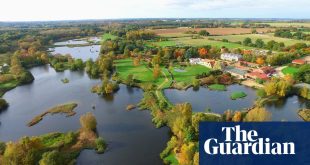I have loved Rome all my life. I went first when I was 10, to stay in a convent. The highlight then was slipping into a cage with two guard dogs, convinced I had a gift for soothing savage beasts. Reader, I survived.
The most recent was in April this year, which involved being pickpocketed at the Circo Massimo metro station. Honestly, it was a privilege to encounter such professionals. Fagin would have called them “good boys” – all right, good girls, if you want the truth. A large, blousy lady blocked the door to the train as I got on, demanding to know something. Two of her companions pushed on alongside, then visibly realised their “mistake”. All three raced to get off before the doors shut. I was jostled in the middle and never even felt the dip. Another passenger told me what had happened as our train pulled away. No violence, ladies and gentlemen. More like street theatre – though the ticket price was a little high.
I have to go to Rome for research – honestly, I do. Over the years, I have walked the seven hills and visited all the usual places. It’s possible to see the Forum and the Colosseum and the Trevi Fountain and the Vatican in a day. You can walk down the Palatine hill to the Forum, knowing that Nero would have taken that route. You can visit the ruin of Pompey’s theatre, where Julius Caesar was murdered. Or just stand on bridges and watch the ancient Tiber flow.
I’m going to recommend a couple of amazing restaurants, but you can stop almost anywhere for some bucatini amatriciana or spaghetti carbonara, with a glass of red wine and perhaps an artichoke so creamy you can cut it with a spoon. Rome has wonders round every corner. Yes, there is too much graffiti, but it’s a living place after all.
In spring, the sun feels warm to Britons more used to rain. Men wear dark blue suits and women tailored jackets. It’s a serious city for them – but not for visitors. For us, it’s a place of little joys. Do go there, perhaps for a weekend before high summer, when the heat and crowds gather. Some places will stay with you for ever, even if you see them only once.
Any visitor should stop at the building known as the Pantheon for two reasons. One is to touch the granite columns that hold up the entrance. They are single pieces, each weighing about 60 tonnes. They were quarried in Egypt and transported here by ship and over land more than 2,000 years ago. To touch them is to touch the ancient world.
If you go inside, you’ll see the oculus, the circle in the middle of the dome that’s open to the sky. It pleases me to know that if you imagine the dome as the upper half of a sphere, the bottom half would graze the marble floor at your feet. The entire building is a demonstration of genius and not to be missed.
You need to buy tickets for the Forum and the Pantheon (except on the first Sunday of the month in the case of the Pantheon). My next-favourite places are all free – handy for someone just pickpocketed. The Isola Tiberina – island in the Tiber – is reachable on foot, via the 2,000-year-old Ponte Fabricio. It looks the same on modern maps as it did to Augustus Caesar. In his day, it was a temple of healing dedicated to the god Asclepius. Pleasantly, there is a hospital there today, with a church across the road for when only prayer is left.
A half-hour walk away in the Testaccio district is what is widely known as the English, or Protestant, Cemetery. It is a quiet place, with some of the most beautiful graves I’ve ever seen. Most famously, the poet John Keats is buried there, with just a few heartbreaking words on his gravestone. Percy Shelley rests in another part and nearby is another reminder of Egypt, the huge pyramid built as a tomb for magistrate Gaius Cestius in about 18BC. Entry to the cemetery is free, and you can spend hours there.
The Aventine hill, not far from the cemetery, is one of the original seven. Today it is a wealthy district, with beautiful houses and schools. At the top, on Piazza dei Cavalieri di Malta, there will probably be a queue to look through the Aventine Keyhole. Though St Peter’s is half a city away, it can be viewed through that little opening in the green door leading to the Priory of the Knights of Malta. As a side tip, walk on a short way to the Giardino degli Aranci (orange tree park) to enjoy views of the city with no queues at all.
We went for lunch then, at a little place near the Trevi fountain called Il Corsaro. A bowl of pasta and a glass of wine was inexpensive and delicious, but it’s hard to go too far wrong in this city. (On our first night in Rome, we ate at a pavement pizzeria overlooking the Bernini fountain in Piazza Navona. The margherita we split was ridiculously good.)
after newsletter promotion
After lunch, we walked to an old favourite which is, for me, the very definition of “macabre”. At the Crypt of the Capuchins (entry €10), a rather lovely museum in the first section shows relics of monastic life but then you enter a series of crypts where the monks have arranged bones in fantastical patterns. I lost count of the skulls by room two.
That night, on recommendation from a relative of my wife, I enjoyed probably the best dinner I’ve ever had. The waiters at Taverna Trilussa, across the river in Trastevere, greeted us happily, the service was excellent, and there was that sense of joy that only a combination of Italians and good food can bring. My wife had artichokes to start, then scampi with garlic and truffles. I had lamb sweetbreads in batter – as light as happiness – then meatballs with truffle shavings.
Next day, we visited the Domus Aurea or Golden House, the folly Nero built after fire destroyed much of the city and freed up a lot of land. That massive complex had every luxury, from a dining room with a rotating ceiling to hot, cold and sulphurous water on tap, art collected from all over, even a huge golden statue of Nero as Apollo, with rays of sun shining from his face. When he first saw the finished house, he said: “At last, I can live as a man should live!”
Like with the statue in Shelley’s Ozymandias poem, very little of the building survives. Emperor Trajan installed public baths on the site, filling in corridors and halls. Excavations deep under the city have unearthed symbols and gods of Egypt. Nero was not just a Roman emperor; he was also a pharaoh, after Egypt was incorporated into the Roman empire.
Sadly, the golden statue was broken up. Trajan needed 24 elephants to drag part of it away. It was known as the Colossus – and it is for that reason that the amphitheatre where it stood is known as the Colosseum. Not for its own great size, but for that of Nero’s likeness.
Enjoy more Bernini sculptures at the Villa Borghese, picnic at the Circus Maximus, visit the Colosseum, the Trevi and all the rest – but walk the hills and see these places too. Rome is ancient and modern in one place. Life, death – and pickpockets.
 Top Naija News – Nigeria News, Nigerian News & Top Stories Top Naija News – Nigerian Newspapers, Nigerian News. topnaijanews is a daily Nigerian newspaper covering Latest News, Breaking News, Entertainment, Sports, Lifestyle and Politics.
Top Naija News – Nigeria News, Nigerian News & Top Stories Top Naija News – Nigerian Newspapers, Nigerian News. topnaijanews is a daily Nigerian newspaper covering Latest News, Breaking News, Entertainment, Sports, Lifestyle and Politics.




